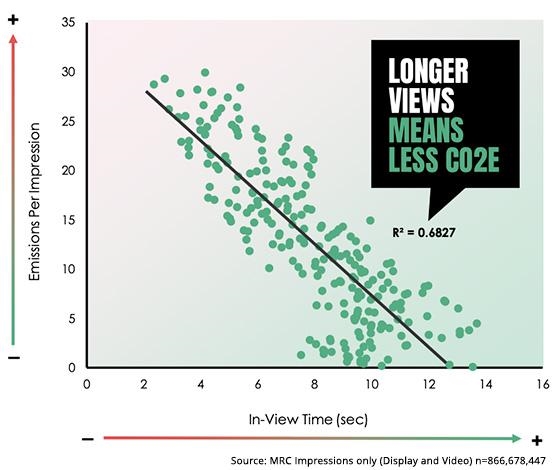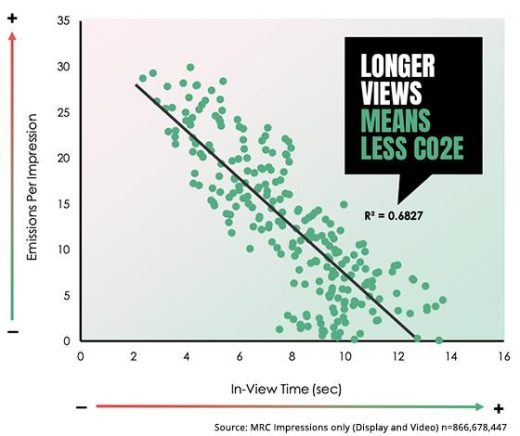Longer Ad View Times Emit Less Emissions, Study By Magna And Oracle Finds
Longer Ad View Times Emit Less Emissions, Study By Magna And Oracle Finds

A link between sustainable advertising practices and positive attention metrics shows that the longer an ad was viewed on a page, the lower the carbon emissions, according to a recent study.
The study, titled Sustainability: The Benefits of a Smaller Carbon Footprint in Media, was conducted by IPG’s Magna Media Trials in collaboration with Oracle, using Scope3 emissions data.
“We had a theory about a correlation between attention and sustainability,” says Tim Carr, head of product marketing for Oracle Advertising. “We wanted to get a sense of a lot of different measurements.”
The study analyzed more than one billion impressions across 55 countries through live campaign tracking. The group stress-tested findings by using artificial intelligence (AI), predictive eye tracking on approximately 350 display ads that appeared on 100 U.S. websites.
The analysis proved a spot that was in view for 10 seconds produced 64% less carbon emissions than a spot with a five-second in-view time. The Scope3 carbon emissions model, which calculates the total grams of carbon dioxide released from digital impression delivery (gCO2e), was the standard measurement used for the study.
Carr said the correlation between in-view time and carbon emissions is likely related to total ad-load times on each page. As more ads load, more emissions are generated. Competing ads will divide viewers’ attention.
Eliminating impressions that do not comply with Media Rating Council (MRC) standards — such as video and display ads that run below the page break and are out of view, which advertisers do not pay for anyway — will reduce 6% of carbon emissions generated by online advertising.
To put this in tangible terms, based upon a Statista digital ad-impressions report, this 6% reduction is akin to removing 34,144 cars on the road for a year.
“The correlation was so strong,” Carr says. We expected there would be a relationship, but the magnitude was larger than expected.”
Some people working on this project thought advertisers have been working toward higher viewability for some time, which they have, but they were surprised “when we showed them the benchmarks. Some marketers still buy lower-quality ads, which cause emissions problems,” he said.
Programmatic advertising generates 215,000 metric tons of carbon emissions a month, across five major economies such as U.S., Germany, Great Britain, France, and Australia, according to the Scope3 State of Sustainability Report for Q1 2023.
The new study delved deeper to explore the relationship between key metrics and carbon emissions, using Oracle’s Moat score system that analyzes multiple performance and engagement dimensions, such as in-view time, in-view rate, screen real estate, and various interactions among other signals in a composite way as a useful index to media quality, and, as we learned, lower carbon.
The study also used Moat In-View scores and Engagement Scores. Higher engagement scores also correlated with lower emissions, with ads ranking in the first quartile yielding 20% higher engagement scores and 83% lower emissions compared to ads in the lowest quartile.
The correlation between higher engagement scores and lower carbon emissions was consistent across markets.
(5)


